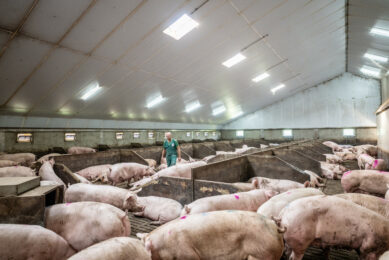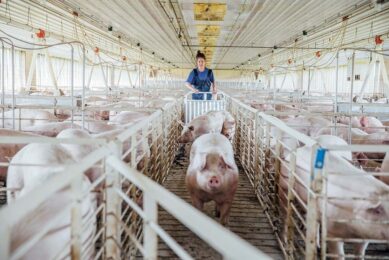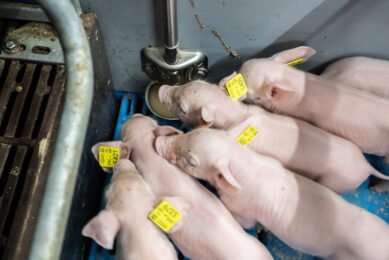Dutch study low-cost detection of subclinical PRRS in pig herds
Dutch scientists have found that pigs between nine and 16 weeks old pigs are the preferred age group to detect PRRS virus, in herds without clinical signs of PRRS.
After the trials, held in the Netherlands, they concluded that the circulation of Porcine Reproductive and Respiratory Syndrome (PRRS) could be detected in eight out of nine of the study-herds, with a relatively low number of blood samples.
They continued to say that testing 12 blood samples in both rt-PCR and ELISA, with six samples in pigs nine weeks of age and six samples in pigs 16 weeks of age, will lead to a cost-efficient first evaluation of the PRRSV infection-status in herds without clinical signs of PRRS.
Test set-up
A cross-sectional study was conducted to find the most effective diagnostic approach to detect circulation of PRRSV. The study was performed in ten swine herds, with sows and fattening pigs or breeding stock.
Herds did not experience clinical signs of PRRS during the last six months before sampling, but a PRRSV infection was confirmed at most two years before sampling. Blood samples were collected from five age groups: sows during early and late gestation, weaners at nine weeks of age, fatteners or breeding stock at 16 and 22 weeks of age. For each category, 20 serum samples were examined; in total 100 serum samples per herd.
Samples
Samples were analysed for PRRSV antibodies with ELISA (n=1002), and rt-PCR when ELISA S/P-ratios were above 1.5 (n=307) or below 0.4 (n=187; random selection from each age group). A logistic regression analysis was used to obtain factors associated with the probability of virus detection in a pig (PCR positive test result).
Herd, ELISA-result, and age group were included as explanatory variables. Variables remained in the model when statistically significant. ELISA results showed that none of the herds could be considered to be free of PRRSV infection. Mean PRRSV seroprevalence in unvaccinated animals varied between 18% and 82%, and mean PRRS-virus prevalence varied between 0% and 41%. In only one of the 10 herds, no PRRS-virus could be detected.
Odds
The odds of finding PRRS-virus in blood samples were 8.6 (95% CI, 5.3-13.9) in pigs of nine weeks of age and 4.6 (95% CI, 3.0-7.0) in pigs of 16 weeks of age, compared with fatteners of 22 weeks of age. This result indicates that nine- to 16-week-old pigs are the preferred age group to detect PRRS-virus, in herds without clinical signs of PRRS.
The scientists, T.F. Duinhof, G. van Schaik G, E.J. van Esch and G.J. Wellenberg, were published in Veterinary Microbiology, 2011. The study was called Detection of PRRSV circulation in herds without clinical signs of PRRS: Comparison of five age groups to assess the preferred age group and sample size.











